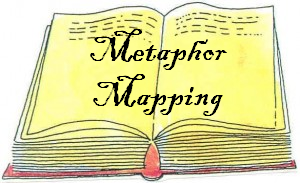What we believe, what our research shows and how we build new languages:
Everything starts with the big picture
–And visual metaphors are the most effective tools available
Get visual to get creative
– Put problems and opportunities in clear context
– Talking it over gets you started but the light bulbs turn on when you make it visual. The context of relationships, problems and opportunities all become clear
– Because many people are embarrassed by their rudimentary drawing skill, pre-drawn images level the playing field and eliminate distraction
Metaphors instantly get groups on the same page
We’ve been researching, experimenting and developing tools for over 20 years. We’ve repeatedly observed the benefits of taking familiar, well understood metaphors and using images of their parts as a language to guide thinking, both the rational mind and the emotions underneath it.
Metaphor Mapping ensures you:
- Make assumptions and beliefs clear, visible and discussable by others
- Gain clear and accurate perspectives
- Unite emotion and logic in both thinking and communication
Tap your intuition, intuitively
Our goal is to develop languages that help individuals and groups thrive in organizations. When deciding to develop a language and giving it form, we consider the dynamic processes involved in organization effectiveness such as group objective setting, social interactions in the creative process, agreement on a common perception of a complex problems and tensions that sometime exist between groups with differing goals/skills/culture. Just as naming things with words allows us to work with them, we name things with images. We believe that visual symbols, in the context of a metaphor, provide meaning and an emotional content that is intuitively understood and goes beyond verbal language.
A symbolic image is much easier to process than a word. If well-crafted, its meaning is immediately obvious. It requires no sequential and analytical processing. Naming the thing, concept or emotion with an image is efficient for an individual person, but, the impact on a group is far greater because words can’t obscure real meaning. Mental models become immediately visible to others. When symbols are slightly light-hearted, people are more direct, less inclined to “pull their punches”, and the issue is dealt with rather than glossed over.
Don’t let logic obscure emotion and vice versa
In the world of human interactions, logic is sometimes a tool people use to manipulate others to agree with something they already decided on an emotional basis. The most effective language is one that allows this ruse to be skipped and the emotion and logic of the situation each separately addressed. Symbols and visual metaphors facilitate this but need to be chosen with care. We seek new techniques of thinking and aim to improve the thinking process by aligning rational thought and emotions.
Draw out tacit, seldom verbalized knowledge
The term tacit knowledge refers to knowledge you’ve obtained from various sources over a long period of time. You probably apply it so regularly that you assume it’s obvious to others so you don’t even imagine the need to share it with others. When a metaphorical language requires you to describe a process or problem, you are likely to articulate that tacit knowledge while you are selecting a symbol.

